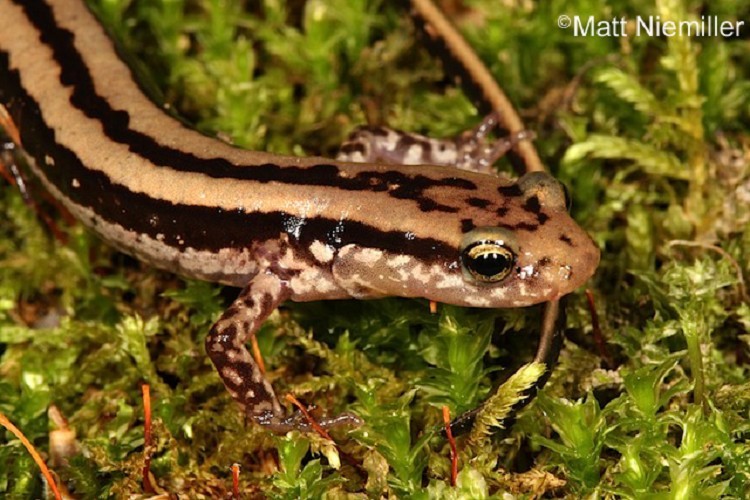Three-lined Salamander
Eurycea guttolineataFormerly a subspecies of E. longicauda. The Three-lined Salamander is a mainly terrestrial salamander found in the western coastal plain of TN and in a few low elevation localities in east Tennessee.
Description: A long, slender species (4.0 to 7.0 inches in length) having a yellowish to orangish dorsum with a black stripe along the spine and a black stripe along either side of the body.
The tail is very long and the sides of the tail have vertical, black, parallel bars appearing as a wavy stripe. The belly is a mixture of greenish-gray and yellow.
Similar Species: Long-tailed Salamander can be distinguished by lack of solid stripes and different ranges.
Habitat: Beneath logs or leaves in flooded forests or along wet ditches. Also uses seepage areas around springs and slow-moving, low-elevation streams.
Diet: A variety of invertebrates, mostly insects.
Breeding information: Very little known of their reproductive activities. Female lays 8-14 eggs in swamps, vernal pools, or slow-moving streams in fall or winter. Hatchling salamanders spend 4-6 months in the larval period before metamorphosing into adults.
Status in Tennessee: Abundant throughout much of their range. Potential threats include loss of bottomland hardwood forest.
Fun Facts:
- Nicknamed “the gentleman salamander” because of its lack of territorial aggressiveness towards other individuals.
Best places to see in Tennessee: Swamps and flooded forests in west TN.
